Rainwater collection system: 6 mo in
popeda
10 years ago
Featured Answer
Sort by:Oldest
Comments (12)
mrspete
10 years agolast modified: 9 years agoKathy Harrington
10 years agolast modified: 9 years agoRelated Discussions
A simple way to collect rainwater from low to the ground pipe?
Comments (6)Hello lehua, Silly me I assumed people would understand that I want to use this water for the garden plants. The roof is approximately 12 feet above ground. Underground cistern is out of question because there's concrete foundation around the house and the house is surrounded by concrete fence/wall which also has concrete foundation, which leaves little non foundation space between the house and the fence, and also there's 4 rainwater pipes so this would involve a lot of work and expenses. I am not doing this to save the money, we get 20,000 gallons of free water per month, so I wanted to do it for the sake of the environment, freshwater is scarce in UAE, and desalinization is an expensive way to get it. We do have a pump that pumps underground water, but that water is salty so we only use it to water native plants such as our date palm and the shade trees we have in the front of the front fence. I was wondering if there's some kind of non-electric device that would let the water flow into a container near every drain (like I said there's 4 of them). I am asking for simple device/way because my husband would not cooperate (he's already complaining that my gardening is expensive)....See MoreRainwater - container collection (above ground)
Comments (11)I live in Peoria, IL. Back in the olden days, there was a Hiram Walker's Distillery in the area. So the old oak empty barrels can usually be found at a local antique dealer and second hand stores. They usually sell for around $40-$50. I'd ship you one but shipping would probably cost $200+, they are very heavy... I know one place that has a stack of probably 50 of these barrels. It takes quite a bit of rinsing to get the smell of the old whiskey out... it doesn't smell bad. The bands are rusty and don't last very long. My barrel lasted about 5 years, then I had to get another one. But I really like the rustic appearance. Its not real convenient because its very heavy if you need to move it around... The wooden barrels have two or three slats in the top and you have to be careful not to cut too much of the slats. I cut a large enough hole in the top that I can coil a hose inside and stick my arm down there. I secured a screen cover over the top to keep out skeeters and keep out debris from the roof. I screwed the screen down on one side. Attached a small lathe to the other side of the screen. I could lift the lathe to open the screen to access the hole and the hose. The downspout was cut off to dump on to the top of the barrel. I cut an overflow hole on the side of the barrel just below the top ring. The hole was just large enough (2"x3") to fit an elbow downspout piece. And then I ran the remnant downspout that was cut off for the barrel, on the side of the barrel from the overflow to the ground. I get water out of the barrel by using the hose as a siphon. I would either place potted plants next to the barrel and siphon water directly on to the plants. Or I would siphon water into a watering can or bucket to move around to the patio or wherever the plant were... One end of the hose (in the barrel) was tied to string and the string was tied to a nail the top of the barrel. I could lift the hose with the string an not have to fish around in the barrel looking for the submerged hose. I tip the barrel upside down for the winter and re-attach the normal downspout. Not sure if I explained that very well. But picture is worth a thousand words....See MoreRainwater collection - best methods
Comments (34)Depends how you disperse your rain water after it is in the barrels, but if dipping buckets or watering cans into them, it is preferred to have one 55 gallon drum full rather than 3 of them one third full. There is the matter of getting the water OUT. It isn't just leaning over the side (and 55 gallons are tall) but lifting the water gets harder the further down you have to dip. We have 5 rain water plastic storage containers. All but one is a 55 gallon drum, we got them all free. One is under a downspout. It has a faucet and hose at the bottom. When it seems like it will rain or is raining heavily, we will run the water through the hose to another 55 gallon barrel. Those are both completely open on the top. Two others are backup storage. Water is run via hose from the first into those when the secondary one is full. They only have a small opening, so the water in them has to be siphoned back into their more open neighbor to use it. The fifth is a large sturdy wheeled garbage container, maybe 70 gallon size. Hubby carries water in 5 gallon buckets out to this container which is by my vegetable gardens. I dip into there to water plants. Slow but except for the faucet we attached to the bottom of the barrel under the downspout, it was all free. So this is our part to save the planet and not waste water, as we don't actually pay for our water supply per se. On the plus side, you get more exercise and you never worry that you have left the hose running. :-) Marcia...See MoreRain water collection systems
Comments (12)We live in central Texas, and rainfall varies from a little to none. People out in our subdivision, though, said only about half with rain collection systems had to buy water. Depends on the size of your tanks. For 3 people they are telling me 20k gallon tank (2 10s). The price is right up there with a well (some have gone 900ft. for water)which is over $20,000, but almost everyone with a well hates their hard hard water,some of it smells bad, and most have had to replace the expensive pump, etc. Rules were changed in past few years to require that one goes through the Edwards aquifer to the next water source, that's why it's so deep. You have to figure in slight increase in roofing to go metal or tile, and of course gutters are essential. I think if we do this it will be for water quality rather than savings. Our city water now has destroyed a shower door, a hot water heater and dishwasher in 5 years without softening. I have had some medical stuff that makes me wary of salt in the softener, but if we were staying here, we would have to get one....See Morepopeda
10 years agolast modified: 9 years agorobin0919
10 years agolast modified: 9 years agoBrian_Knight
10 years agolast modified: 9 years agomu3jump
10 years agolast modified: 9 years agoAnnie Deighnaugh
10 years agolast modified: 9 years agoCamG
10 years agolast modified: 9 years agopopeda
10 years agolast modified: 9 years agochispa
10 years agolast modified: 9 years agoMagdalenaLee
9 years agolast modified: 9 years ago
Related Stories

SAVING WATER6 Reasons Why You Should Save Your Rainwater Now
Collect and store during the rainy season so you’ll have water ready for irrigation when you need it
Full Story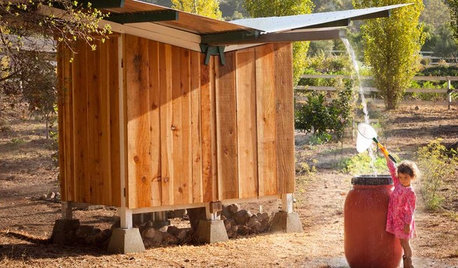
FARM YOUR YARDCollecting Rainwater and Eggs From a California Chicken Coop
See how a butterfly roof helps a hen home’s design soar into double-duty territory
Full Story
GREEN BUILDINGHow to Harvest Rainwater for Your Garden
Conserve a vital resource and save money by collecting stormwater for irrigation in a barrel or tank
Full Story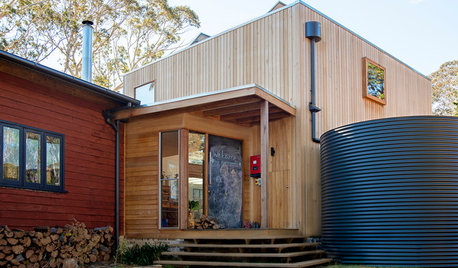
SAVING WATERIs a Rainwater Cistern Right for You?
These extra-large containers reduce runoff and save on the use of potable water for the landscape
Full Story
LANDSCAPE DESIGNLandscaping Tricks to Manage Stormwater Runoff
Help rainwater absorb slowly back into the earth with paving grids, gravel beds and other porous systems
Full Story
EARTH DAY5 Ideas for a More Earth-Friendly Garden
Consider increasing the size of garden beds, filtering rainwater and using plants to reduce energy use
Full Story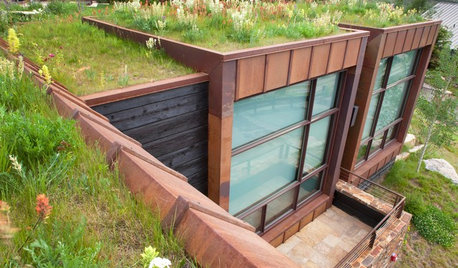
GREEN BUILDING6 Green-Roof Myths, Busted
Leaky, costly, a pain to maintain ... nope, nope and nope. Get the truth about living roofs and see examples from simple to elaborate
Full Story
GREEN BUILDINGJust Add Water: Rain Barrel Magic
Take your rainwater storage from practical to beautiful with a new breed of design-friendly rain barrels
Full Story
HOUZZ TVHouzz TV: How to Install a Rain Barrel
This DIY tutorial shows how easy it can be to capture rainwater from your roof to use in your garden later
Full Story
EARTH DAYGrow a Beautiful Garden With Ecofriendly Greywater
Reducing home water waste means lower bills and a healthier planet. Here's how to set up a greywater home irrigation system that can help
Full Story


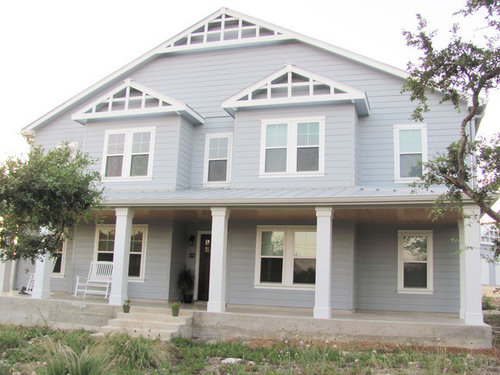
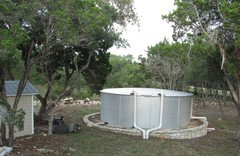

popedaOriginal Author